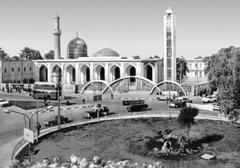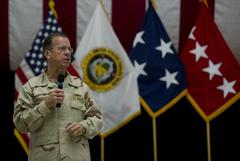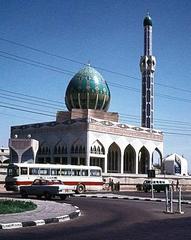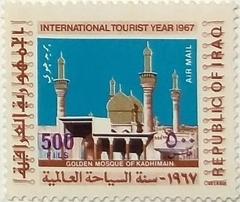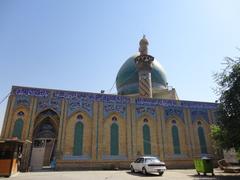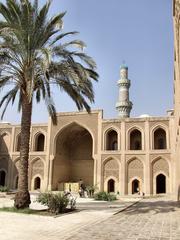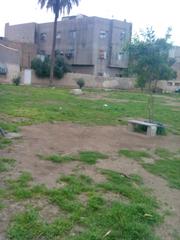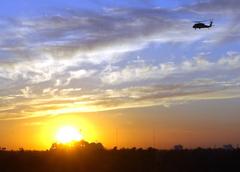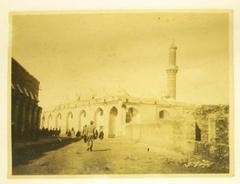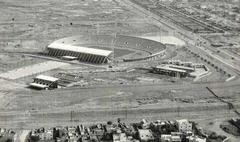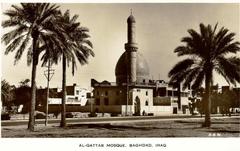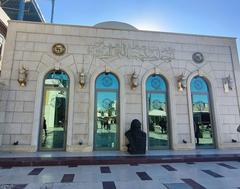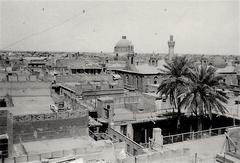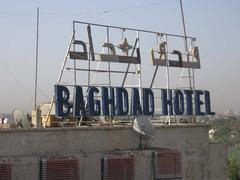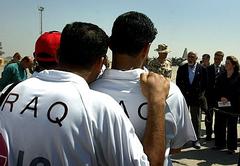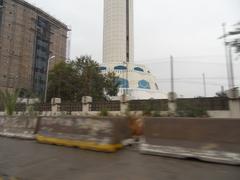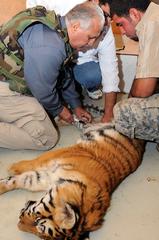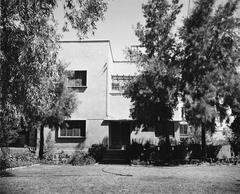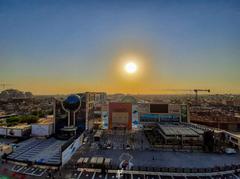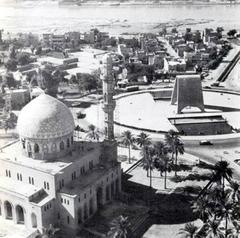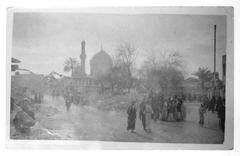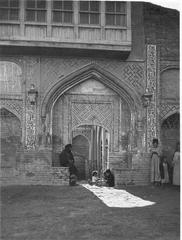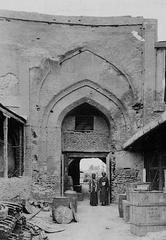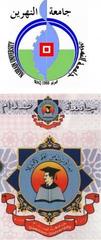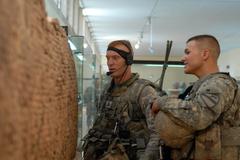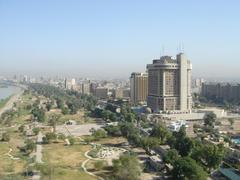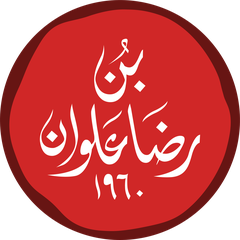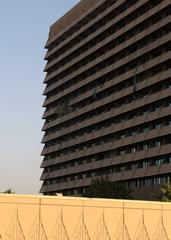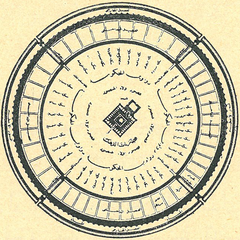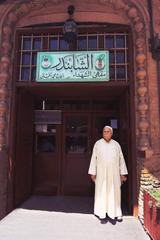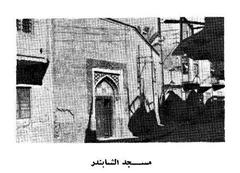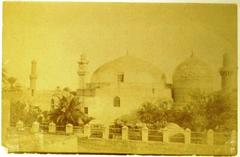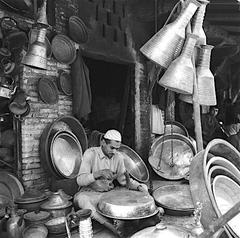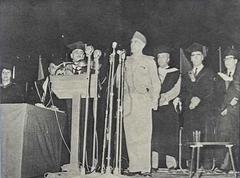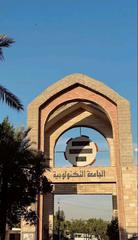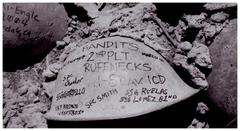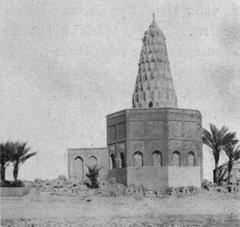
The Monument to the Unknown Soldier, Baghdad: Visiting Hours, Tickets, and Historical Significance
Date: 04/07/2025
Introduction
The Monument to the Unknown Soldier in Baghdad stands as one of Iraq’s most profound tributes to sacrifice and national unity. Erected during the early 1980s, amidst the Iran-Iraq War, this iconic memorial honors the countless Iraqi soldiers whose identities remain unknown but whose sacrifices have shaped the nation’s modern history. Designed by renowned Iraqi sculptor Khaled al-Rahal and Italian architect Marcello D’Olivo, the monument is an enduring symbol of resilience, reflecting both traditional Iraqi motifs and modernist architectural innovation.
This comprehensive guide explores the monument’s origins, design, symbolism, and practical information for visitors, including opening hours, accessibility, and travel tips. Whether you are visiting for historical insight, architectural appreciation, or personal reflection, the Monument to the Unknown Soldier offers a meaningful connection to Iraq’s collective memory. This article draws on multiple authoritative sources for accuracy and depth (Designed in Iraq, Alluring World, Total Military Insight, Evendo).
Table of Contents
- Introduction
- Historical Context and Origins
- Architectural Design and Symbolism
- Symbolic and Cultural Significance
- Preservation and Contemporary Relevance
- Visitor Information
- Cultural Etiquette and Respect
- Frequently Asked Questions (FAQ)
- Visuals and Multimedia
- Conclusion and Call to Action
- References
Historical Context and Origins
Conceived in the early 1980s during the Iran-Iraq War (1980–1988), the Monument to the Unknown Soldier was the first of three major memorials in Baghdad dedicated to honoring fallen soldiers, preceding the Al Shaheed Monument (1983) and the Victory Arch (1989) (Designed in Iraq). The monument enshrines the universal tradition of honoring those who have died anonymously in war, symbolizing Iraq’s collective sacrifice and unity during times of conflict.
Officially inaugurated in 1982, the monument was strategically sited in central Baghdad, near other significant memorials, to maximize both visibility and accessibility.
Architectural Design and Symbolism
Philosophy and Influences
The design, by Khaled al-Rahal and Marcello D’Olivo, blends modernist architectural forms with ancient Mesopotamian and Islamic motifs. The structure draws inspiration from the dira’a, a traditional Arab warrior’s shield, symbolizing the ultimate sacrifice and the defense of the nation (Alluring World, Wikipedia).
Structural Features
- Shield: The monument’s most prominent feature is a cantilevered copper-clad shield, 42 meters in diameter and tilted at a 12-degree angle. This symbolizes a fallen shield, representing loss, bravery, and remembrance.
- Cube: Beneath the shield lies a seven-layered metal cube, referencing the seven levels of Jannah (Heaven) in Islamic belief, and interspersed with red acrylic sheets symbolizing the blood of fallen soldiers (Everything Explained).
- Flagpole: An imposing steel flagpole, adorned with Murano glass in the colors of the Iraqi flag, rises beside the shield, adding a vertical counterpoint and reinforcing themes of patriotism and unity.
Materials and Artistic Details
- Copper and Steel: The shield’s interior features alternating steel and copper pyramidal modules, echoing the geometric patterns found in Islamic art (Alluring World).
- Murano Glass: The flagpole’s Murano glass panels add an element of international artistry and vibrant color.
- Plaques and Calligraphy: Arabic inscriptions around the monument honor the unknown soldiers, anchoring the memorial in Iraqi cultural traditions.
The Underground Museum
Accessible via a shaft beneath the shield, the underground museum houses artifacts, photographs, and exhibits relating to Iraq’s military history and the broader context of sacrifice. Natural light filters through the shaft, creating a contemplative atmosphere for reflection (Evendo).
Urban Setting and Landscape
Set within landscaped gardens in the Al-Mansour district, the monument forms part of Baghdad’s commemorative core, alongside the Al Shaheed Monument and Victory Arch. Pathways, benches, and native flora provide a tranquil environment for visitors.
Symbolic and Cultural Significance
The monument serves as a focal point for national mourning, remembrance, and pride. Official ceremonies, military parades, and commemorative gatherings are held here, especially on Martyrs’ Day and other significant anniversaries (Total Military Insight). The eternal flame and reflective pool further symbolize ongoing remembrance and the enduring impact of sacrifice.
Beyond commemoration, the monument fosters national unity, transcending sectarian and regional divides. Educational visits and community gatherings underscore its role as a bridge between generations, teaching the importance of sacrifice and collective memory.
Preservation and Contemporary Relevance
Despite periods of instability, ongoing restoration efforts have preserved the monument’s integrity. Today, it remains a vital cultural and tourist landmark, drawing local and international visitors, scholars, and artists (Designed in Iraq).
Visitor Information
Opening Hours and Admission
- Hours: Open daily from 8:00 AM to 6:00 PM. Hours may change on public holidays or during special events—verify before visiting.
- Admission: Free for all visitors. Guided tours may be available through local operators for an additional fee.
Accessibility
- General Access: Paved walkways and ramps make the outdoor areas accessible for most visitors.
- Museum Access: The underground museum involves stairs and may present challenges for those with limited mobility.
Location and Getting There
- Address: Al-Mansour district, central Baghdad (coordinates 895Q+CMP, Baghdad).
- Transportation: Easily reached by taxi or public bus. Walking from Al-Mansour Street toward the Tigris River takes about 20–30 minutes (Evendo).
- Nearby Attractions: Al Shaheed Monument, Victory Arch, Great Celebrations Square, and the National Museum of Iraq.
Visitor Tips
- Best Times: Early morning or late afternoon for cooler temperatures and fewer crowds.
- Dress Code: Modest, lightweight, long-sleeved clothing is recommended.
- Photography: Permitted outdoors; restrictions may apply in the museum or during ceremonies.
- Facilities: Limited restrooms; no on-site dining, but cafes and restaurants are nearby in Al-Mansour.
- Personal Safety: Monitor local security advisories and carry identification.
Special Events and Tours
- Ceremonies: National holidays and remembrance days often feature official events.
- Guided Tours: Not always available on-site, but local operators may include the monument in broader city tours.
Cultural Etiquette and Respect
- Pause for silence near the central monument.
- Greet locals with respect; many are eager to share insights.
- Be mindful during prayer times.
- Observe ceremonies respectfully and follow any on-site instructions.
- Avoid littering and respect signage regarding photography and restricted areas.
Frequently Asked Questions (FAQ)
Q: What are the visiting hours for the Monument to the Unknown Soldier?
A: Daily, 8:00 AM to 6:00 PM.
Q: Is there an entry fee?
A: No, admission is free.
Q: Are guided tours available?
A: Local guides may include the monument in broader city tours; check with tour operators.
Q: Is the site accessible for people with disabilities?
A: Outdoor areas are accessible, but the underground museum may be challenging.
Q: Can I take photographs?
A: Yes, outdoors. Check for restrictions in the museum or during official events.
Q: Are there special events at the monument?
A: Yes, especially on national holidays and remembrance days.
Visuals and Multimedia
- High-quality images and virtual tours are available on cultural heritage and tourism websites.
- Interactive maps and digital guides (such as the Evendo app) can enhance your visit.
Conclusion and Call to Action
The Monument to the Unknown Soldier in Baghdad is not only an architectural marvel but a poignant symbol of Iraq’s history and unity. Its design, cultural resonance, and educational value make it a must-visit for anyone seeking to understand Iraq’s journey and honor its heroes.
To plan your visit, stay updated on current events, and access guided tours, download the Audiala app and follow our social media channels. For a deeper dive into Baghdad’s historical sites, consult related articles and resources listed below.
References
- Monument to the Unknown Soldier in Baghdad: History, Architecture, and Visitor Information (Designed in Iraq)
- Monument to the Unknown Soldier Baghdad: Architectural Marvel, Visiting Guide, and Historical Significance (Alluring World)
- Visiting the Monument to the Unknown Soldier in Baghdad: History, Symbolism, and Practical Guide (Total Military Insight)
- Visiting The Monument To The Unknown Soldier in Baghdad: Hours, Tickets, and Travel Tips (Evendo)




